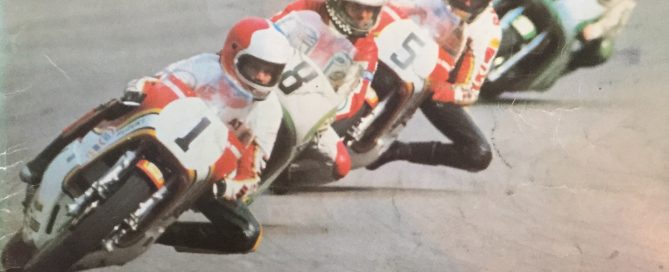Boot on the other foot
I’ve been there so many times before. Stuck in the commentary box with nothing to talk about but having to talk about something to keep the producer and more important the dwindling numbers of the viewers happy. I’ve never been on the other side until this Sunday. Sitting in front of the television screen waiting for something to happen with my former colleagues doing an unbelievable job to keep the show on the road as the rain continued to pour down.
The boot was really on the other foot and how ironic was it that I was on the Isle of Man on Sunday morning. The same famous mountain course that staged that very first World Championship race on June 13th 1949. The very same mountain course that hosted the British round of the World Championship until Silverstone took over in 1977.
Jak’s Sports Bar on the very wet and windy Douglas Promenade as the Irish Sea pounded in up the beach was our venue. The savvy manager opened up early at 11.00 am with the MotoGP™ race at Silverstone due to start in 11.30. The place was jammed packed with race fans from all over the world on the Island to watch the TT Classic races. Some started with coffee while others were straight onto the ale – after all they were on holiday. Like everybody we sat, drank, waited and drank, waiting for something to happen. More and more people arrived but despite the disappointment at each announcement of more delays, nobody moaned about riders not risking their lives to go out there, it was those sodden spectators that everybody raised a glass to, toasting their dedication.
Around 2.30 pm the rain had stopped outside and we decided – myself and three ex TT riders – to relieve the boredom and it was time to make our own lap of the 37 miles TT circuit. They wanted to relive their memories which they did with some scary old stories. We stopped at a pub in Ramsey and to the annoyance of the customers, asked the landlord to switch over from Premier League football coverage to MotoGP™. The pictures from the studio with the rain pouring outside told their own story and the customers cheered as they switched back to the football.
Back at Jaks, plenty of alcohol was still being consumed because everybody knew what the news from Silverstone was going to be. The announcement came as no great surprise. We were the lucky ones in the warm and dry, and all the sympathy was for those spectators who’d braved it out.
My thoughts turned to the television presenters and commentators. An unnamed pit lane reporter would say they knew things were desperate when Nick Harris reached the Milk Cup Final moment. When I had really run out of things to say I would recount the 1986 Milk Cup Final success of my beloved Oxford United. It was time to switch off, not that there many viewers still switched on.
As I was about to leave Jak’s, I raised my glass to those spectators at Silverstone and everybody at BT Sport who did such an amazing job. PS, it’s Monday morning on the Isle of Man and the start of racing has been delayed because of the weather. Nothing changes.


